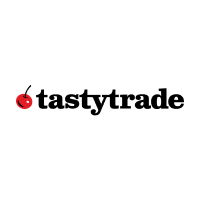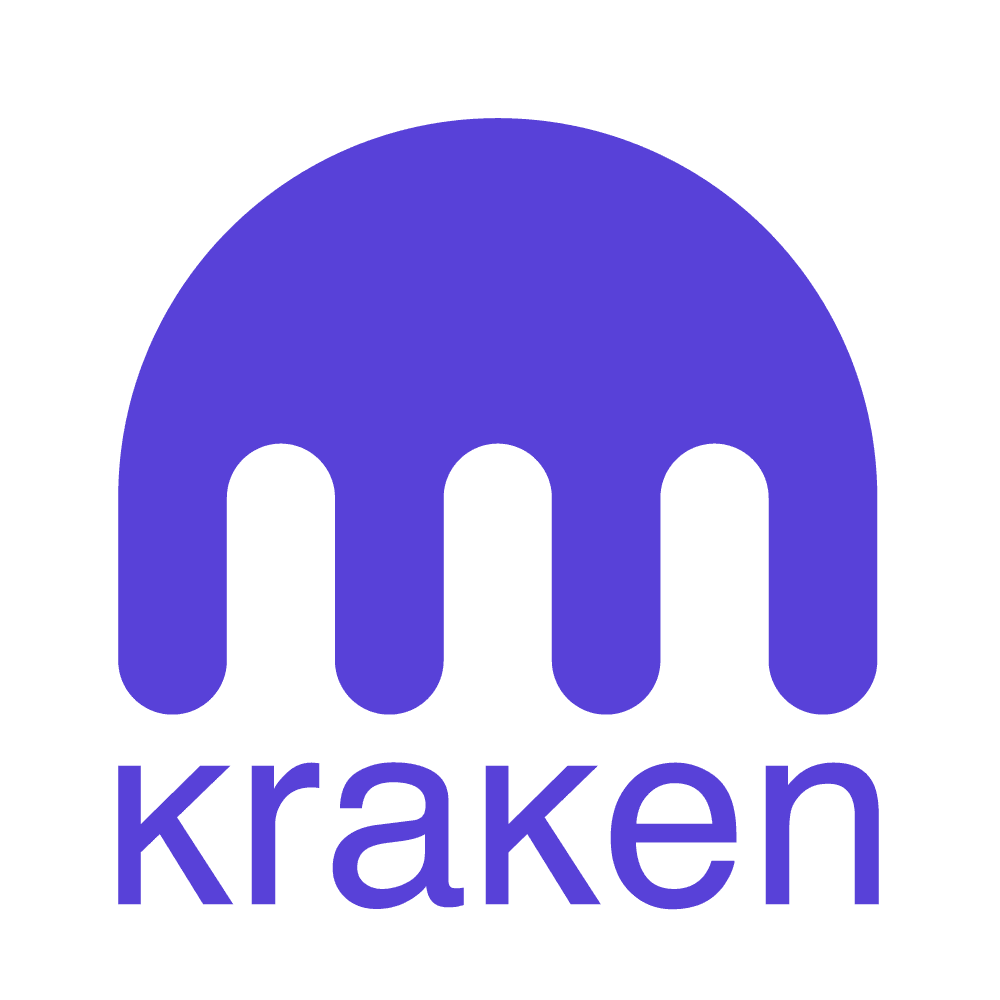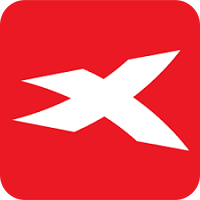Best Crypto Brokers 2025
Crypto moves fast, and broker choice decides the edge, so here’s the 2025 shortlist that actually helps traders win, not just sign up and hope. The best crypto brokers this year deliver tight fees, rock‑solid security, and seamless mobile tools for clean execution and scalable strategies.
Did you know that Global crypto spot volume regularly reaches tens of billions of dollars per day, and that liquidity only matters if a broker routes orders efficiently and keeps spreads tight?
In this guide, we zero in on platforms that earn trust with regulation, keep costs transparent, and deliver tools that work when markets rip or dip.

The 10 Best Cypto Brokers in 2025
This Top 10 lineup highlights platforms with transparent pricing, regulated custody, and mobile-first tools that keep trades sharp and strategies scalable. Quick fact: daily spot crypto volume often reaches tens of billions, and only brokers with smart order routing and real depth help traders tap that flow. Use this guide to compare costs, coin access, regulation, and workflow, then match a broker to a strategy in minutes.

Kraken

Robinhood

Coinbase

Crypto.com

Interactive Brokers

eToro

Revolut

Tastytrade

Webull

Oanda
Key Takeaways
☑️ Good for beginners
- Coinbase: Clean UI, broad coin access, strong security, and easy funding options; great on mobile for first crypto buys.
- eToro: Simple account opening, social CopyTrader, and clear 1% crypto commission shown at open and close; handy if starting small.
☑️ Good for advanced
- Kraken: Transparent maker‑taker fees, deep liquidity, advanced charts, and derivatives in eligible regions; solid for active strategies.
- Interactive Brokers: Institutional‑grade platforms and routing with selective crypto access; best when combining crypto with multi‑asset workflows.
☑️ Dedicated crypto brokers/exchanges
- Crypto.com: Mobile‑first with wide markets, integrated Visa card, and tiered fees by volume/token; strong all‑in‑one crypto app.
- Robinhood Crypto: Seamless app experience with quick onboarding and basic order types; convenient for casual spot trading.
Top Brokers Key Features

In this section, the exclusive in‑house ratings reflect hands‑on testing of security, fees, platform tools, and execution, so traders can compare strengths at a glance. To make setup simple, each pick lists the minimum deposit to open an account and the typical account approval time, helping traders fund fast.
| Broker | Overall Rating | Minimum Deposit | Account Opening Time |
|---|---|---|---|
| Kraken | 4.9/5 | $1 | 1-3 days |
| Robinhood | 4.8/5 | $0 | 1 day |
| Coinbase | 4.7/5 | $0 | 1-3 days |
| Crypto.com | 4.7/5 | $20 | 1-5 days |
| Interactive Brokers | 4.6/5 | $0 | 1-3 days |
| eToro | 4.6/5 | $50 | 1 day |
| Revolut | 4.6/5 | $0 | 1 day |
| Tastytrade | 4.5/5 | $0 | 1 day |
| Webull | 4.4/5 | $0 | 1 day |
| Oanda | 4.4/5 | $0 | 1-3 days |
How to Choose a Crypto Broker in 2025
With hundreds of platforms offering crypto trading, choosing the right broker can feel like navigating a maze. The right decision can save you money, protect your assets, and give you the tools you need to trade effectively. Here are the key things to look for:
Pro Tip: Before funding any account, check two things: how the broker is regulated and what the withdrawal fees are. These two details often make the difference between a smooth trading journey and a frustrating one.
Broker Guide
Critical Pitfalls to Avoid
Even with the right research, it’s easy to fall into traps when choosing a crypto broker. Here are the most common pitfalls you’ll want to steer clear of:
1. Chasing Only the Lowest Fees
While low spreads and commissions are important, they shouldn’t be your only deciding factor. Some platforms with rock-bottom fees cut corners on security, customer support, or liquidity — and those compromises can cost you far more in the long run.
2. Overlooking Regulation and Safety
Not all crypto platforms are properly licensed. Trading with an unregulated broker might look tempting, but it leaves your funds at risk with little recourse if things go wrong. Always confirm regulation before you deposit.
3. Ignoring Withdrawal Policies
Many traders focus only on deposits and trading, forgetting to check how withdrawals work. Slow processing times, high withdrawal fees, or restrictive limits can lock up your profits when you need them most.
Bottom Line
Avoiding these pitfalls is just as important as finding the right features. A trustworthy, well-regulated broker with fair fees and transparent policies will protect your investment and give you peace of mind while you trade.
Cryptocurrency Brokers - Users Data
Our insights don’t just come from expert reviews, but they come from our own database of traders who actively use these brokers. We gather ratings on fees, ease of use, mobile apps, and overall satisfaction to show how each platform performs in real trading conditions. This community-driven data helps you cut through the hype and choose a broker that actually delivers.










Fee Comparison
When choosing a crypto broker, trading fees can make a big difference to your returns, especially if you trade popular coins like BTC and ETH frequently. Each broker has its own fee structure — some charge a flat commission, others build costs into the spread, and a few combine both. This section breaks down and compares the trading fees across leading brokers so you can see which platforms offer the best value for your trading style.
| Broker | Trading Fees |
|---|---|
| Kraken | Maker fees: 0.00% to 0.25% Taker fees: 0.08% to 0.40% |
| Robinhood | $0 commission |
| Coinbase | Maker fees: 0.00% to 0.40% Taker fees: 0.05% to 0.60% |
| Crypto.com | Maker fees: 0.08% to 0.25% Taker fees: 0.18% to 0.50% |
| Interactive Brokers | 0.12% to 0.18% |
| eToro | 1% per side (buy and sell) |
| Revolut | 0% to 1.49% |
| Tastytrade | 0.35% of trade value (spot crypto) |
| Webull | $0 commission |
| Oanda | 0.25% fee (spot crypto) |
Non-Trading Fees
Non‑trading fees don’t touch the trade itself, but they still hit the bottom line—so check them before funding. Expect four essentials: deposit fees (bank wires, cards, or crypto network costs), account fees (monthly or account maintenance), withdrawal fees (bank, card, or blockchain network charges), and inactivity fees (charged when accounts sit idle). The rule of thumb is simple: keep funding and cash‑out routes low‑cost, avoid idle‑account penalties, and prefer brokers that publish clear, up‑to‑date schedules with examples.
| Broker | Account Fee | Inactivity Fee | Withdrawal Fee | Deposit Fee |
|---|---|---|---|---|
| Kraken | $0 | $4 | ||
| Robinhood | $0 | $0 | ||
| Coinbase | Free | 1.49% | ||
| Crypto.com | $0 | $0 | ||
| Interactive Brokers | $0 | $0 | ||
| eToro | $5 | $0 | ||
| Revolut | $0 | $0 | ||
| Tastytrade | $0 | $0 | ||
| Webull | $0 | $0 | ||
| Oanda | $0 | $0 |
Regulations and Safety Measures
Staying safe starts with choosing brokers that operate under clear, enforceable rules. Look for verified licenses in relevant jurisdictions, strong client‑asset protections (segregation and, where applicable, insured or qualified custody), and transparent disclosures about how assets are stored and audited. Prefer platforms that publish third‑party security assessments, keep most funds in cold storage, and provide robust account protections like 2FA, device whitelisting, and withdrawal allowlists.
Regulation and Licensing
Confirm authorization where trading occurs, plus oversight for any derivatives or securities exposure.
Custody and Asset Segregation
Ensure client assets are ring‑fenced from company funds and that custody partners are named and reputable.
Operational Resilience
Review incident history, uptime records, and transparency via status pages.
AML/KYC Compliance
Expect identity verification, sanctions screening, and transaction monitoring to reduce fraud and account takeovers.
User‑side Security
Enable strong 2FA, hardware key support if available, withdrawal address allowlists, and session/device management.
Pro tip: Always verify a broker’s regulatory licenses and investor protections before opening an account. With the right safeguards, you can trade confidently knowing your money is secure.
How to Verify a Broker’s Regulation in 1 Minute
Here’s a fast, practical 1‑minute check to verify a broker’s regulation.
Find the legal entity name and registration claims
☑️ Open the broker’s footer or “About/Legal” page and note the full legal entity name, company number, and claimed licenses or registrations.
Cross-check on the regulator’s public register
☑️ Search the regulator’s registry (e.g., SEC, FINRA, FCA, ASIC, MAS, BSP/SEC for the Philippines, or MiCA‑aligned EU registers) and confirm the exact legal name, status (active), permitted activities, and supervised address match the broker’s disclosures.
Confirm jurisdictional fit and product scope
☑️ Ensure the entity that serves the user’s country is the one that’s licensed, and that the license covers the offered crypto services (custody, exchange, derivatives) rather than unrelated activities.
Validate disclosures and safety basics
☑️ Check for segregated client assets, named custody partners, 2FA and withdrawal allowlists, incident/status pages, and a clear complaints/escalation route; if any of these are missing or vague, treat it as a red flag.
Comparing the Best Brokers
With so many platforms offering access to coins like Bitcoin (BTC), Ethereum (ETH), and beyond, finding the right broker can feel overwhelming. To make it easier, we’ve compared the top crypto brokers side by side — looking at fees, features, supported coins, and ease of use. This quick snapshot helps you see which platforms best match your trading goals, whether you’re a beginner or an experienced investor.

Kraken
Best for traders who want deep liquidity, tiered maker‑taker fees, and strong security with widespread cold‑storage practices and optional proof‑of‑reserves attestation. Best for scaling from spot into margin and eligible derivatives on a pro‑grade web and mobile stack with reliable execution.
| Interactive Brokers Overview | Interactive Brokers Data |
|---|---|
| Minimum Deposit | $1 |
| Deposit Method | Bank Transfer, Debit/Credit Card, ACH, Paypal |
| Withdrawal Method | Bank Transfer, Debit/Credit Card, ACH, Paypal |
| Withdrawal Fee | $0 |
| Account Opening Time | 1-3 Days |
| Inactivity Fee | |
| Review | Read Here |

Robinhood
Best for simple, app‑first crypto trading with $0 stated commission and quick account opening, ideal for casual buys and recurring orders. Best for those who prioritize ease of use and a clean mobile experience over advanced order types and venue‑style depth.
| Interactive Brokers Overview | Interactive Brokers Data |
|---|---|
| Minimum Deposit | $0 |
| Deposit Method | Bank Transfer, Debit/Credit Card |
| Withdrawal Method | Bank Transfer, Debit/Credit Card |
| Withdrawal Fee | $0 |
| Account Opening Time | 1 Day |
| Inactivity Fee | |
| Review | Read Here |

Coinbase
Best for newcomers who want an intuitive web/mobile flow, broad payment methods, and a reputation for strong security with most customer assets held offline. Best for traders who need a clear path from simple buy/sell to lower‑fee Advanced trading with better charts and order control.
| Interactive Brokers Overview | Interactive Brokers Data |
|---|---|
| Minimum Deposit | $0 |
| Deposit Method | Bank Transfer, Debit/Credit Card, Crypto Wallets |
| Withdrawal Method | Bank Transfer, Debit/Credit Card |
| Withdrawal Fee | $0 |
| Account Opening Time | 1-3 Days |
| Inactivity Fee | |
| Review | Read Here |

Crypto.com
Best for a mobile‑first all‑in‑one experience with wide coin access, card integration, and recurring buys that make funding and spending seamless. Best for users who value tiered fees with potential token‑based discounts alongside everyday crypto features in one app.
| Interactive Brokers Overview | Interactive Brokers Data |
|---|---|
| Minimum Deposit | $20 |
| Deposit Method | Bank Transfer, Debit/Credit Card, Crypto Wallets |
| Withdrawal Method | Bank Transfer, Debit/Credit Card |
| Withdrawal Fee | $0 |
| Account Opening Time | 1-5 Days |
| Inactivity Fee | |
| Review | Read Here |

Interactive Brokers
Best for advanced users who want institutional‑grade platforms, selective crypto access, and transparent percentage‑based commissions without hidden spreads. Best for combining digital assets with multi‑asset research, routing, and professional charting in a single workflow.
| Interactive Brokers Overview | Interactive Brokers Data |
|---|---|
| Minimum Deposit | $0 |
| Deposit Method | Bank Transfer |
| Withdrawal Method | Bank Transfer |
| Withdrawal Fee | $0 |
| Account Opening Time | 1-3 Days |
| Inactivity Fee | |
| Review | Read Here |

eToro
Best for beginners who want smooth account opening, social features like CopyTrader, and a clear 1% crypto commission shown at open and close. Best for those who value a straightforward fee display and community‑driven discovery over exchange‑style depth.
| Interactive Brokers Overview | Interactive Brokers Data |
|---|---|
| Minimum Deposit | $50 |
| Deposit Method | Bank Transfer, Credit and Debit Cards, eToro Money, Neteller, Skrill, Klarna, Giropay, Trustly, iDEAL, RapidTransfer, Przelewy 24 |
| Withdrawal Method | Bank Transfer, Credit and Debit Cards, eToro Money, Neteller, Skrill, Klarna, Giropay, Trustly, iDEAL, RapidTransfer, Przelewy 24 |
| Withdrawal Fee | $5 |
| Account Opening Time | 1 Day |
| Inactivity Fee | |
| Review | Read Here |

Revolut
Best for quick deposits, easy funding options, and simple in‑app crypto access tied to everyday finance. Best for fee‑conscious traders in supported regions using Revolut’s exchange offering, which cut taker fees significantly compared with legacy app pricing.
| Interactive Brokers Overview | Interactive Brokers Data |
|---|---|
| Minimum Deposit | $0 |
| Deposit Method | Bank Transfer, Credit/Debit Cards, Apple Pay, Google Pay |
| Withdrawal Method | Bank Transfer, Credit/Debit Cards, Apple Pay, Google Pay |
| Withdrawal Fee | $0 |
| Account Opening Time | 1 Day |
| Inactivity Fee | |
| Review | Read Here |

Tastytrade
Best for active traders who want tight workflows, engaging education, and integrated web/mobile platforms with straightforward crypto access. Best for pairing light spot crypto exposure with core strengths in options and stocks under one roof.
| Interactive Brokers Overview | Interactive Brokers Data |
|---|---|
| Minimum Deposit | $0 |
| Deposit Method | Bank Transfer |
| Withdrawal Method | Bank Transfer |
| Withdrawal Fee | $0 |
| Account Opening Time | 1 Day |
| Inactivity Fee | |
| Review | Read Here |

Webull
Best for streamlined mobile and web trading with zero stated commissions on crypto and stocks, plus quick onboarding and paper trading. Best for newcomers who want simple charts, basic research, and convenient deposits, accepting spread‑based costs over pro venue features.
| Interactive Brokers Overview | Interactive Brokers Data |
|---|---|
| Minimum Deposit | $0 |
| Deposit Method | Bank Transfer |
| Withdrawal Method | Bank Transfer |
| Withdrawal Fee | $0 |
| Account Opening Time | 1-3 Days |
| Inactivity Fee | |
| Review | Read Here |

Oanda
Best for traders who value regulated FX pedigree, dependable execution, and region‑specific crypto access with clear pricing. Best for disciplined strategies that prioritize platform stability, research, and risk tools when dabbling in digital assets.
| Interactive Brokers Overview | Interactive Brokers Data |
|---|---|
| Minimum Deposit | $0 |
| Deposit Method | Bank Transfer, Credit Cards, Debit Cards, PayPal, Skrill, Neteller |
| Withdrawal Method | Bank Transfer, Credit Cards, Debit Cards, PayPal, Skrill, Neteller |
| Withdrawal Fee | $0 |
| Account Opening Time | 1-3 Days |
| Inactivity Fee | |
| Review | Read Here |
Key Takeaways
For beginners
- Coinbase stands out for friction‑light onboarding, intuitive mobile/web apps, and broad payment methods, making first buys and small deposits straightforward.
- eToro suits first‑timers who want social discovery and a clear 1% crypto commission per side, with smooth account opening and simple funding.
For experienced traders
- Kraken fits active strategies with deep liquidity, tiered maker‑taker fees, and pro‑grade charts and order types across web and mobile.
- Interactive Brokers helps multi‑asset traders add selective crypto with institutional platforms and transparent percentage‑based fees.
For global traders
- Crypto.com offers a mobile‑first super app with wide markets, integrated card, and tiered fees that travel well across regions.
Why Trust Broker Guide?
When it comes to choosing a broker, trust matters. At BrokerGuide, we combine independent analysis, real user data, and hands-on testing to give you insights you won’t find in marketing brochures. Here’s what sets us apart:
Independent Testing
We open live accounts, place trades, and test deposits and withdrawals — just like you would. This means our reviews are based on real trading experiences, not sales pitches.
Data-Driven Insights
Our in-house ratings and fee comparisons come from hard numbers. We track average spreads, commission structures, non-trading fees, and platform reliability across months of testing.
User Feedback at Scale
Beyond expert reviews, we tap into our own community database of traders. Their ratings on fees, mobile apps, and customer service give you a ground-level view of what to expect.
Global Coverage
From forex and stocks to CFDs and crypto, we review brokers across multiple markets and regions, so you can compare options side by side without bias.
BrokerGuide exists to help you trade smarter and safer. Our mission is simple: cut through the hype, highlight the facts, and point you to the brokers you can truly trust.
Broker Guide Tweet
How We Score Brokers
We believe rankings are meaningless without transparency. Our scoring system, refined 10,000+ hours of testing, evaluates brokers against 106 objective criteria, grouped into 5 weighted pillars. Each pillar reflects what actual traders prioritize, based on surveys of 20,000+ readers and market gap analyses. Here’s how we turn raw data into actionable insights:
1. Fees & Costs (30%)
Low commissions mean little if hidden fees erode returns.
☑️ We tracked 500+ live trades to measure spread consistency (e.g., Pepperstone’s EUR/USD vs. IG’s).
☑️ Audited non-trading fees such as inactivity penalties, withdrawal costs (eToro’s $5 fee), currency conversions (Oanda’s 0.9% markup).
☑️ Modelled long-term costs. Compared $10,000 portfolio scenarios (e.g., Schwab’s $0 equity fees vs. XTB’s CFD financing charges).
2. Safety & Regulation (25%)
Your capital’s security is non-negotiable.
☑️ Verified licenses with regulators (e.g., FINRA ID 36408 for Interactive Brokers).
☑️ Confirmed fund segregation via bank statements (e.g., Fidelity’s JPMorgan Chase accounts).
☑️ Stress-tested encryption. Attempted breaches on dummy accounts (256-bit SSL minimum).
☑️ Tracked compensation schemes. SIPC ($500k) vs. FSCS (£85k) vs. ASIC’s requirements.
3. Tools & User Experience (20%)
Clunky tools cost time and opportunities.
☑️ We measured platform stability during volatility (e.g., thinkorswim’s crash rate vs. Trading 212’s).
☑️ Rated mobile apps (iOS/Android) for speed, biometric security, and order-fill latency.
☑️ Audited advanced features: Backtesting capacity (SaxoTraderPRO), API reliability (Oanda), AI charting (IG’s ProRealTime).
4. Asset Diversity (15%)
Diversification shouldn’t require 5 brokers.
☑️ Mapped instrument coverage. Stocks (Schwab), forex (Pepperstone), crypto (eToro), bonds (Fidelity).
☑️ Verified market access. Pre-market hours (IBKR), weekend indices (IG), global exchanges (Saxo).
☑️ Checked fractional share support (Trading 212) and micro-lot trading (Oanda).
5. Support & Reliability (10%)
When markets move, slow support loses money.
☑️ Timed response rates. 24/7 chat (Pepperstone: 28s avg), phone (Schwab: 2m 14s), email (XTB: 6h).
☑️ Submitted complex queries. Tax docs (Fidelity), margin errors (IBKR), withdrawal disputes (eToro).
☑️ Monitored outage frequency during earnings/NFP events.
FAQ
What’s the difference between a crypto broker and an exchange?
A crypto broker typically offers simplified access, sometimes with spread-based pricing and integrated finance features, while an exchange provides order-book trading with visible maker-taker fees and deeper tools.
How do I check if a broker is regulated?
Find the legal entity on the broker’s legal page, then confirm it on the relevant regulator’s public register (e.g., SEC/FINRA, FCA, ASIC, EU MiCA registers, or PH SEC/BSP), making sure the name, status, permissions, and address match.
Which fees matter most for crypto trading?
Consider trading fees (maker-taker, spreads, commissions) and non-trading fees (deposits, withdrawals, FX, inactivity), and estimate all-in costs based on the funding method and typical trade size/frequency.
Are “zero-commission” crypto trades really free?
Not necessarily—costs can be embedded in the spread or routing; always compare displayed execution price versus a reference price to gauge effective cost.
What security features should a broker offer?
Look for strong custody practices (cold storage, segregation), multi-factor authentication, device/withdrawal allowlists, incident transparency, and, where available, proof-of-reserves attestations.
How fast can I get approved and start trading?
Many platforms approve verified accounts within minutes to hours, though enhanced checks or regional rules can extend timelines; have ID and proof of address ready to speed up review.
Which payment methods are typically supported?
Bank transfers, cards, and on-chain crypto deposits are common; fees, limits, and speeds vary by method and region, so confirm funding and withdrawal rails in advance.
What platform tools help active traders the most?
Reliable mobile/web apps, robust charting, multiple order types, depth-of-market views, and stable uptime during volatility are key for clean execution.
How do I minimize non-trading fees?
Use low-cost funding rails (e.g., ACH/bank transfer where cheaper), batch withdrawals to limit network fees, avoid inactivity penalties, and compare FX costs when funding in different currencies.
What’s the safest way to start if I’m new?
Begin with a small deposit on a regulated platform, enable all security controls, place a test trade, and run a small withdrawal to validate fees and processing before scaling up.






